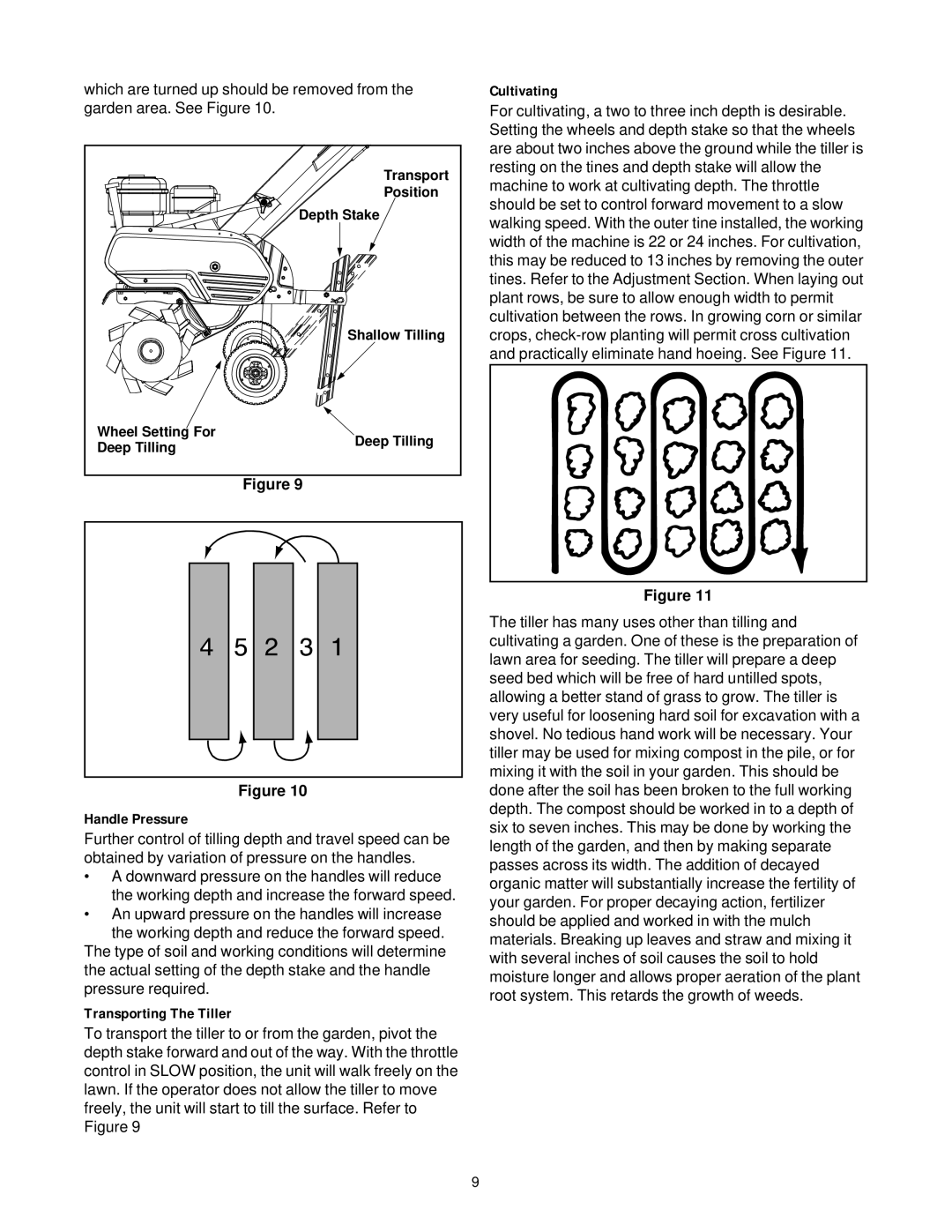
which are turned up should be removed from the garden area. See Figure 10.
| Transport | |
| Position | |
| Depth Stake | |
| Shallow Tilling | |
Wheel Setting For | Deep Tilling | |
Deep Tilling | ||
|
Figure 9
Cultivating
For cultivating, a two to three inch depth is desirable. Setting the wheels and depth stake so that the wheels are about two inches above the ground while the tiller is resting on the tines and depth stake will allow the machine to work at cultivating depth. The throttle should be set to control forward movement to a slow walking speed. With the outer tine installed, the working width of the machine is 22 or 24 inches. For cultivation, this may be reduced to 13 inches by removing the outer tines. Refer to the Adjustment Section. When laying out plant rows, be sure to allow enough width to permit cultivation between the rows. In growing corn or similar crops,
Figure 10
Handle Pressure
Further control of tilling depth and travel speed can be obtained by variation of pressure on the handles.
•A downward pressure on the handles will reduce the working depth and increase the forward speed.
•An upward pressure on the handles will increase
the working depth and reduce the forward speed. The type of soil and working conditions will determine the actual setting of the depth stake and the handle pressure required.
Transporting The Tiller
To transport the tiller to or from the garden, pivot the depth stake forward and out of the way. With the throttle control in SLOW position, the unit will walk freely on the lawn. If the operator does not allow the tiller to move freely, the unit will start to till the surface. Refer to Figure 9
Figure 11
The tiller has many uses other than tilling and cultivating a garden. One of these is the preparation of lawn area for seeding. The tiller will prepare a deep seed bed which will be free of hard untilled spots, allowing a better stand of grass to grow. The tiller is very useful for loosening hard soil for excavation with a shovel. No tedious hand work will be necessary. Your tiller may be used for mixing compost in the pile, or for mixing it with the soil in your garden. This should be done after the soil has been broken to the full working depth. The compost should be worked in to a depth of six to seven inches. This may be done by working the length of the garden, and then by making separate passes across its width. The addition of decayed organic matter will substantially increase the fertility of your garden. For proper decaying action, fertilizer should be applied and worked in with the mulch materials. Breaking up leaves and straw and mixing it with several inches of soil causes the soil to hold moisture longer and allows proper aeration of the plant root system. This retards the growth of weeds.
9
